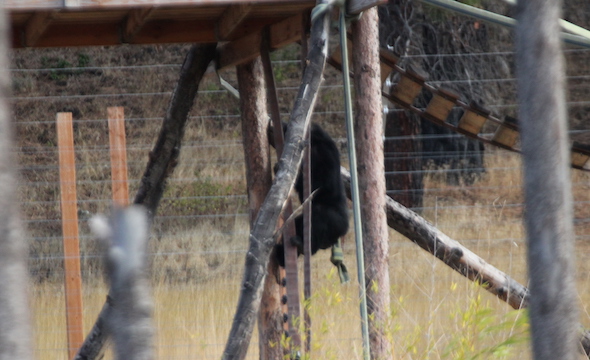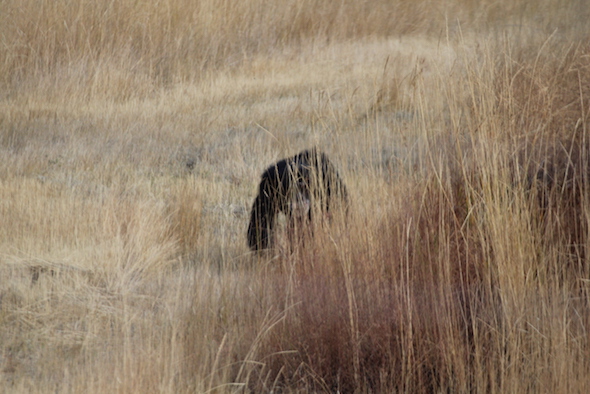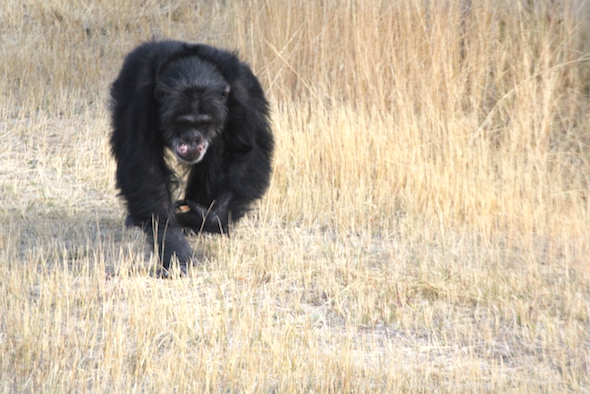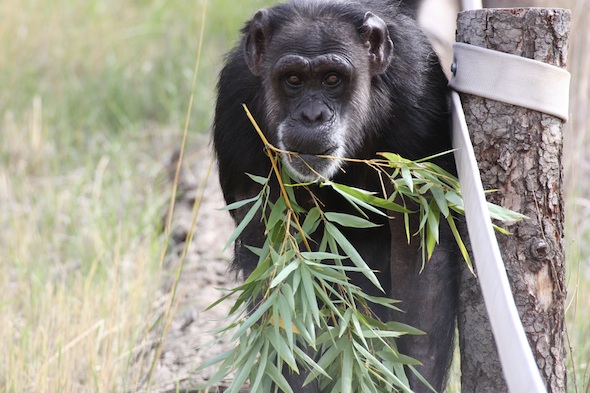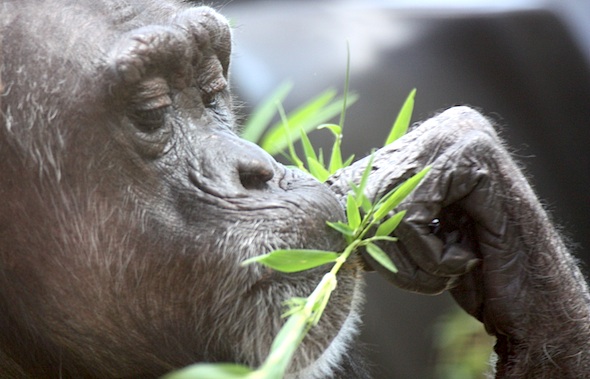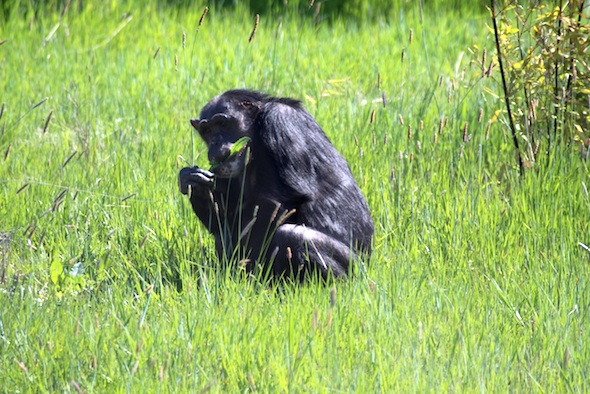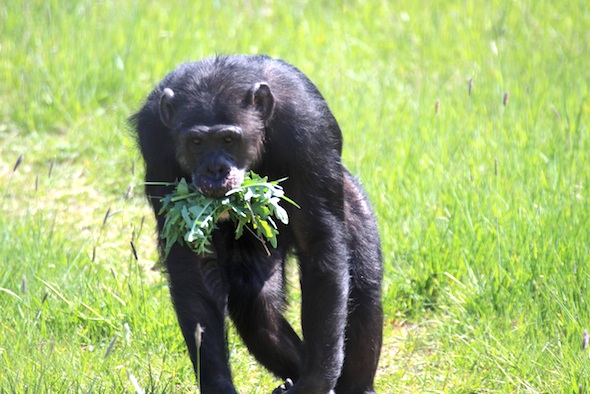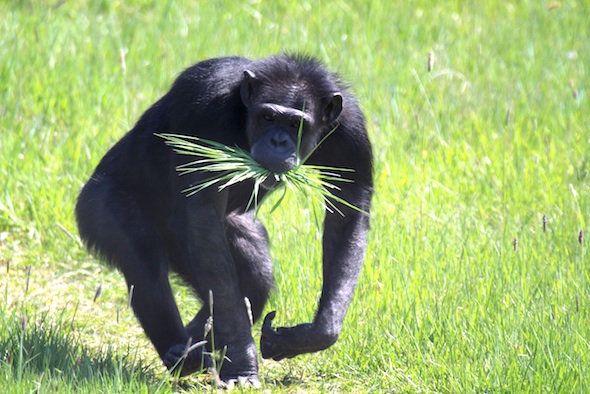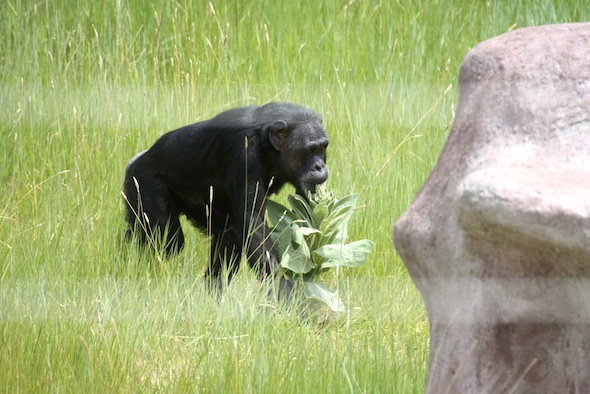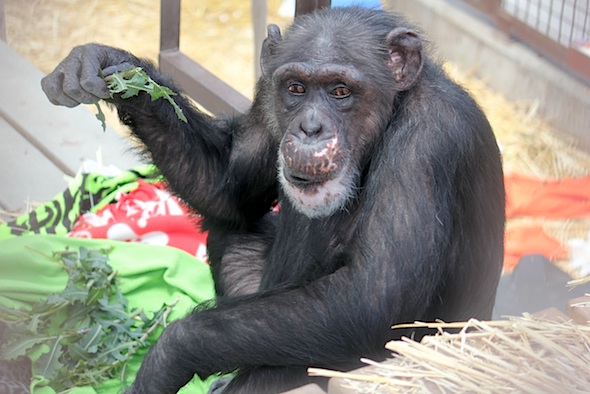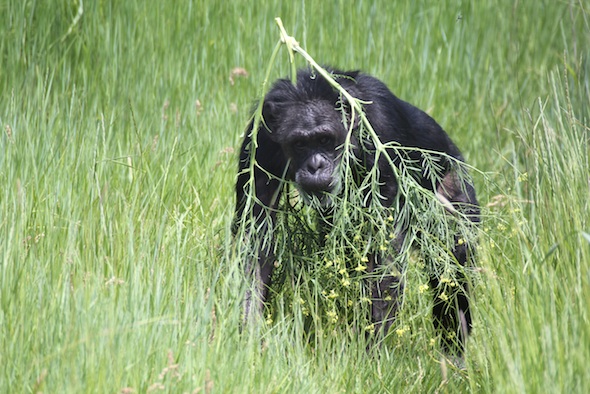Last month I wrote about “missing chimpanzee” Foxie, who has been doing a lot of solo exploring on the hill this summer. In May, Anna shared that Negra had been venturing out further on Young’s Hill than she had ever been before.
Well, we can add Burrito to this growing list of chimpanzees who have suddenly become more confident in the outdoor habitat.
As I was finishing up a walk with Jamie this afternoon, I came around to the front of the building and noticed the figure of a chimpanzee way up on the towers at the top of the hill. To my surprise, it was Burrito who was up there, walking across the shaky bridge, all by himself. I should mention that there was no food forage involved, so his motivation wasn’t tied to finding a snack.
I rushed up to the observation deck and got a few photos as he climbed down from the lookout and slowly walked back toward the greenhouse:
As I took these photos, I was grinning like a fool, and I called down to Burrito to tell him how great I think he is.
Like humans, chimpanzees experience varying degrees of anxiety and fear. In some ways, Burrito shows more anxiety than some of the other chimpanzees. It took him a long time to get comfortable in the greenhouse when it was first completed in 2010, even when the ladies were spending the majority of their time out there (read this blog post from Elizabeth from March 2010 and watch the video of Burrito finally making a breakthrough and spending some time in the greenhouse).
And now, this summer, five years after the chimpanzees were given the 2-acre outdoor habitat that we call Young’s Hill, they are still continuing to gradually embrace and explore their autonomy.
I wonder what they will be doing five years from now.
